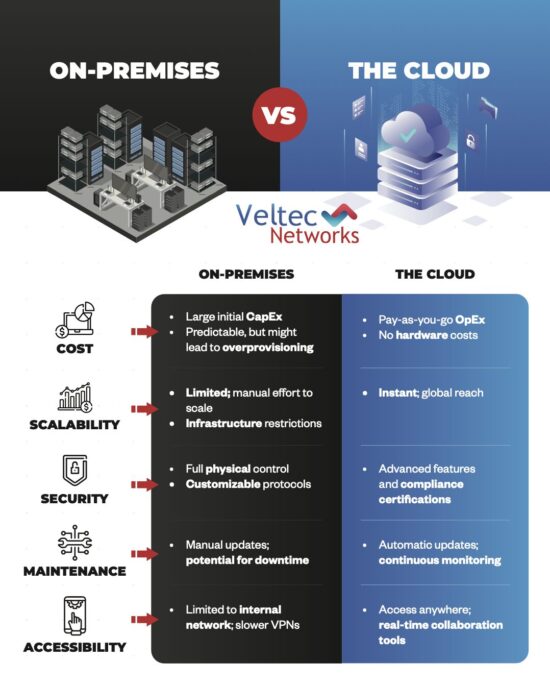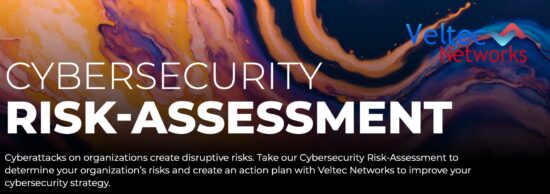
Managed Service Providers globally have introduced a new buzzword into their service vocabulary….Introducing, the vCIO!
What is a vCIO?
How Does A vCIO Benefit Your Company?
Technology can be so tantalizing, especially for a small-to-midsized business. The promise is there. So is the hype. With the right Information Technology (IT), you can streamline your business processes and make your employees more productive. You can analyze your business data and gain insights that will propel your business to growth and greater profitability. Except… It takes expertise and resources to reap these benefits. Big companies have a Chief Information Officer (CIO) who can lead efforts to make technology drive business results. Now, a small business can have the same advantages by means of a vCIO, a virtual CIO.
What is a vCIO?
The term “vCIO” describes the outsourcing of CIO functions to an experienced IT services firm. The firm provides the Chief Information Officer’s functions on an as-needed basis. This puts big company-level CIO expertise in the hands of a smaller company on an affordable basis. A vCIO, or outsourced CIO, is a good option for a business that needs a CIO but lacks the resources for a full-time executive in this role.
What does a Virtual CIO do for you?
To understand what a vCIO does, it’s first necessary to grasp what a full-time CIO does. This varies by company, of course, but there are several standard aspects of the job in any organization. The CIO’s main job is to be in charge of technology strategy. This means defining and executing plans for IT that align with overall business strategy.
For example, if a company wants to compete more effectively in the market through better customer engagement, the CIO will be responsible for fulfilling the technological aspects of that strategic goal. It might mean investing in customer-facing technologies like mobile apps or online user experiences that outpace the competition.
From this responsibility for technology strategy flows most of the CIO’s other mandates. With the goal of realizing technology strategy, the CIO is tasked with selecting IT vendors, specifying the technology “stack” that will implement the strategy and so forth. Imagine, for instance, that a strategic goal of improving customer service requires letting customers track their orders online. This might involve connecting the e-commerce system with third-party shipping APIs.
What is the best way to execute this technological requirement? In a large organization, the CIO will oversee the team that plans and executes the API integration project. The CIO’s job is to make sure the integration project is economically and technically sound. The API integration should use the same software stack (e.g. Microsoft Visual Studio/Windows Server) that is standard for the company. That way, the project won’t accidentally add complexity and unforeseen maintenance costs in the future.
On a day-to-day basis, CIOs manage IT resources and budgets. What needs to be replaced, and when? What are the hardware standards that will keep the business operating and keep costs down, and so forth? They issue recommendations on hardware, software and infrastructure expenditures. They engage with other stakeholders to define and enforce security and compliance policies. They own the tech roadmap.
The vCIO does all of this, but without working for your business full-time. This arrangement works partly because a smaller company does not usually have the same depth of need for a CIO as a big business. The CIO role might take a few hours a week to fulfill at a small company. It’s still a critical role, one which will negatively affect the business if it’s neglected, but it doesn’t require a full-time executive.
The need for a vCIO in a small-to-midsized organization
In some ways, smaller companies actually have a greater need for a CIO than big corporations. In a large organization, there is usually enough technological expertise among senior IT managers to work through strategic decisions collectively. This may not be optimal, but a group of seasoned IT executives can assess vendors and solutions and build alignment with business strategy. In a small company, this is a true rarity.
A small company IT department is designed for efficiency. It’s typically tasked with keeping IT systems operating and troubleshooting problems that arise. Generally, and this is not a knock on IT departments, they lack the experience to devise and implement large, complex technology initiatives. You might have superb people on staff who know how to keep email and PCs running well, but they may not have the knowledge or skills to assess an API integration vendor pitch.
The CIO deficit in a smaller organization creates business risk. Without a knowledgeable IT leader, a company might commit to a technology that is more expensive to maintain than it first appears. Unforeseen costs might include ongoing software maintenance tasks that must be performed by outside resources, patching, license and maintenance fees and so forth.
vCIO benefits
In addition to the cost savings inherent in not having to hire a six-figure executive on a full-time basis, the vCIO can be objective about your business and its IT needs. They have a valuable outsider’s perspective. They aren’t committed to defending earlier IT investment decisions. They also bring potentially new ideas into the business-IT dialogue. And, hopefully, they do so in a reasoned way.
The IT world offers some exciting ideas for business managers. Data analytics, cloud computing and process automation are just a few examples. A knowledgeable outsider will be able to lead a discussion about why these types of solutions will or will not be a good fit for the company. The vCIO can help the business assess the potential benefit and weigh it against the cost and risks associated with pursuing a solution.
Engaging with a vCIO
You have a number of options for engaging with a vCIO. Some are available on an individual, contract-basis. A more preferable approach might be to receive the services of a vCIO as part of an overall IT services agreement. The same vendor that manages your network and infrastructure will be well-positioned to offer vCIO services as part of an IT service package.






